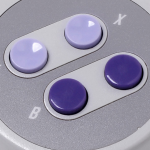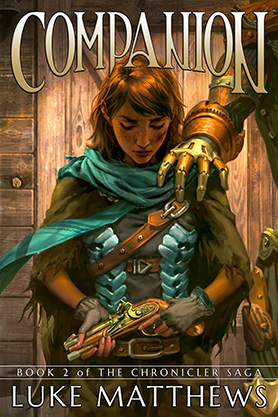We’ve all been there: The seedy, low-rent comic shop that looks like the bastard love-child of a hoarder’s garage sale and a disaster site. Comics, toys, games, and t-shirts are haphazardly arranged in no discernible organizational style. Back issue boxes are virtually inaccessible, covered in random detritus. Aisles are so narrow and crammed with so much flotsam that the slightest mistake could lead to a Wall-E style garbage heap collapse. And, to top it all off, the guy behind the counter can’t be bothered to look up from his copy of Fangoria long enough to answer a simple “Do you guys have the latest issue of Invincible?”
Local comic book shops are an interesting breed of retail establishment. In an industry that thrives on repeat customers driven by intense fandom, a successful comic shop must toe the line between catering to the hardcore fan-base and serving new potential customers without scaring them away. It’s a tough tightrope to walk, and attention to the right details is an absolute necessity.
The focus of this week’s article: Organizational Folly.
Let me begin by saying that this entry won’t cover stores that don’t even attempt to organize – I’ll hit that subject in Clutter, Clutter, Clutter. For now, I’m going to focus on stores who make baffling and frustrating choices in how they organize what they do have in their store.
Nonsensical Divisions
Some divisions are logical, the simplest being to just alphabetize your entire stock regardless of other factors. Dividing by publisher makes sense as well, and is probably the most common division used by the average local comic shop. Virtually all shops have an “indie” section, mixing the books from smaller publishers like Boom! Studios or Oni Press.
What about the major-label imprints like Icon or Vertigo? Do they belong with their parent company, or in the indie section? I suppose arguments can be made either way, but putting them in with other “indie” or creator-owned books doesn’t seem to make sense. If you’re going to separate by publisher, separate by publisher. Just because Vertigo books tend to be more oddball or mature doesn’t make them indie.
Also, don’t put your new releases on a separate shelf from your standard organizational scheme. If I’m looking for the newest issue of The Walking Dead, I’m going to go to the same place where all the other issues of the Walking Dead normally are. When I don’t find the newest issue there, my first thought is that it must be sold out. Making me look in two different places for “new” issues versus “recent” issues is annoying, and can lead me to just give up on finding something.
Current Issue Stacks
One of the most aggravating organizational blunders is deep stacks of current issues cluttering up the shelves. These stacks can happen for two main reasons: over ordering of an individual issue, or leaving too many issues mixed in on the “current” shelf. In either case, archive. If an issue is more than 6 months old, it belongs in a back-issue bin.
Invariably, these giant stacks start sliding around, mixing with other books or falling off the shelf, potentially damaging the books and/or causing patrons to have to shuffle through giant, disorganized stacks to – in all likelihood – not even find what they’re looking for. Archiving laziness leads right into my next subject…
Lack of Maintenance
This is probably the most common problem with smaller independent shops. Take pride in what’s on your shelf, and work hard to maintain your organizational scheme, regardless of what it is. Be more organized than the geeks that come in and ruin your setup. Customers will invariably pick up books and put them back in the wrong place, knock something over while searching for a particular book, or just be outright sloppy and inconsiderate.
Every evening after closing, fix any organizational issues that customers have caused. Every morning before opening, make sure everything’s in order. It shows that you care about your shop’s content and, by extension, your customers.
“The Long Shelf”
This one might just be my own pet peeve, but is probably the worst organizational scheme in existence and the most off-putting for a customer. The “Long Shelf” occurs when, for example, a shop has one long wall that contains all of their current issue racks. When the comics on those racks are alphabetized, they are placed in one long line across the entire top shelf, from one end of the store to the other. Then, when that shelf runs out, the next letter starts a new shelf clear back on the other side of the store like some sort of giant, infuriating typewriter drum.
This is especially frustrating in a store whose racks already contain natural divisions every 3 or 4 feet. Use these divisions! Nobody wants to walk back and forth across the entire store to find the book they’re looking for. Let me stand in front of a single shelf section and follow the natural alphabetization, each shelf acting like a page in a book rather than turning the entire wall into an irritating scroll.
The Ideal
I can go either way on separating books by publisher. I see advantages and disadvantages to it, but my preferred organization is simple alphabetization. With the preponderance of indie and creator-owned books, I may frequently know the title of something I’m looking for without knowing who it’s actually published by. This is especially true of the casual reader – someone looking for a book after seeing a movie – who may not even know the publishers at all.
In my ideal world, books would be simply alphabetized, and separated into individual shelf sections. Only 4-5 months worth of current issues would remain on the shelf at any given time – put the rest in back-issue bins. Put new releases in their normal slot on the shelf and just mark them, don’t put them in a different section. Last, but not least, put effort into maintaining your organization, and show your customers that you care as much about their experience in your shop as you do for the products you’re selling them.










